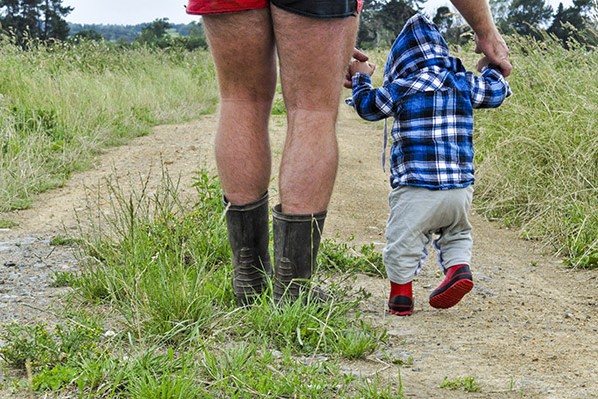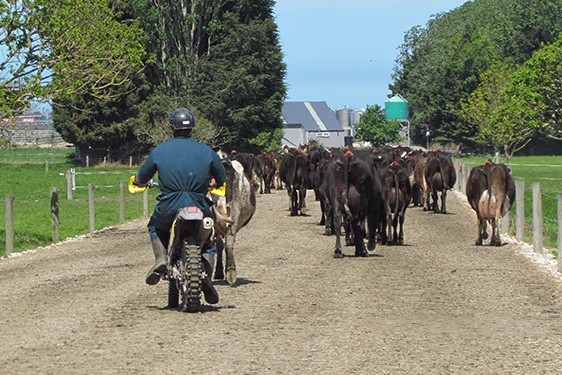Sheryl Brown
Dairy as a collective may need to support the exit of dairy farmers for the overall good of the industry under new land-use change rules, DairyNZ strategy and investment leader for sustainability Rick Pridmore says.
Pridmore retires from his role at DairyNZ in January after more than a decade as its sustainability guru.
He wants to see farmers looked after in the face of the new regulations that could include land-use change.
Some dairy farmers are going to have to exit the industry and it has to be done mercifully, he says.
‘If the whole group is slow to move, the public pressure gets bigger and bigger. That’s what we are experiencing now with water, greenhouse gases and animal welfare.’
The best solution could be for the industry to support those farmers, which would eventually be a good result for the industry as a whole
During the tough financial downturn, it was encouraging to see Fonterra stand up and offer farmers loans. The industry has to think in those ways to get through this environmental problem, Pridmore says.
“We have to find a way to exit some farmers from land in a humane way. As a collective I think we need to find solutions.”
Pridmore, a former NIWA chief executive, was first approached by John Luxton and Tim Mackle to come on board with DairyNZ as a sustainability adviser in 2007.
He’s always had a passion to help businesses work with the environment, he says.
At DairyNZ he was initially tasked with environment, animal welfare, public perception and biosecurity.
“At that stage none of these things were big problems, but I knew we couldn’t carry on the way we were.
“They (John and Tim) had great foresight hiring someone to think about sustainability when dairy was still in a dominant growth phase. Everyone wanted to buy a dairy farm and make more milk.”
While there are signs domestically and globally of change, the dairy industry has moved too slowly, he says.
The biggest reason being that there were no policies in place to control land use change. Dairy farming has been a permitted activity, hence the mass number of conversions and expansions of land into dairy without restriction.
Once the signals about environmental impact of dairy started to shine through, it was always going to be difficult to get 11,000-plus privately-owned businesses to change quickly.
Even Fonterra has to get everyone on board to make changes, which has proved a challenge, and the pressure has been building.
“If the whole group is slow to move, the public pressure gets bigger and bigger. That’s what we are experiencing now with water, greenhouse gases and animal welfare.”
There is incredible pressure from outside channels for the dairy industry to change. There will be new issues in the future and the industry is going to have to respond faster and farmers and the wider industry will need to work together more than ever, he says.
“We need better systems so we can move quicker. We need to be a collective again, all the dairy companies and all the farmers – the solution is working together. We all have to sing the same song.”
As the industry changes from its pioneering growth stage and moves into a sustainable development phase, farmers will have to grow differently in the future to increase profit.
“You will not be able to grow buoyantly but you will be able to grow cleverly.
“For the last 15 years we’ve been able to make more milk, now it’s about making more money.”
The public needs to understand, however, going forward, that costs can’t keep being put on farmers without them being paid more for their product.
Public pressure has been made worse because the dairy industry hasn’t told its story well enough, Pridmore says.
The dairy industry has made significant progress on the environmental front, but the facts are not always what people have wanted to hear.
One of his proudest reflections during his time at DairyNZ has been to see the work dairy farmers have made under the Sustainable Dairying: Water Accord.
“I’ve been so impressed with what farmers have done. All their hard work hasn’t’ always been recognised, I admire them because they got on and did it.”
He also believes the industry has made huge strides in building trust with local and central government and set up good relationships to have more robust discussions in future.
With his own equity share in a dairy farm at Te Awamutu, Pridmore still sees a good future for the industry.
He believes technology will provide solutions for reducing environment footprint of dairy in the next couple of years, including nitrogen leaching and methane emissions.
While dairy farming may be still the lifestyle and career people pursue in the future, farmers should continue to expand their investment portfolios to have more diversity outside dairy, however.
Rick plans on travelling and keeping his hand in at DairyNZ on the odd occasion.





